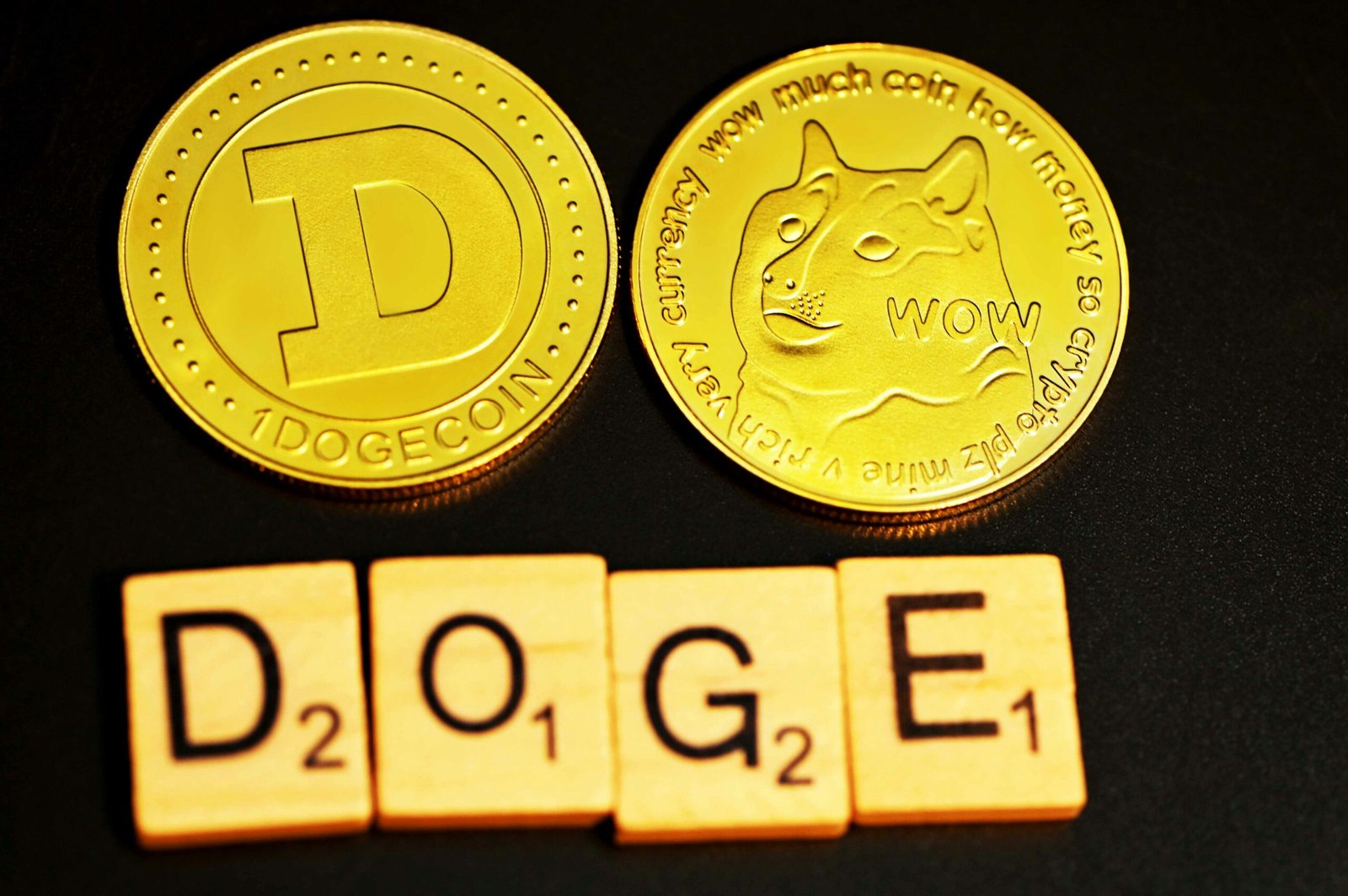Introduction to Gold Market Trends
The gold market has been characterized by notable fluctuations in recent months, driven by various economic indicators and geopolitical factors. As investors navigate through uncertainty, gold continues to be viewed as a safe-haven asset, which is particularly pertinent during times of market volatility. The recent trends in gold prices reveal a complex interplay between supply and demand, inflation rates, and currency strength, notably the US dollar. This dynamic environment has led to significant price movements, making the gold market a focal point for analysts and investors alike.
One critical observation in the current gold landscape is the emergence of a bull flag pattern, which is a technical analysis term illustrating periods of consolidation following a strong upward price movement. In this context, the bull flag serves as a potential indicator for future price trajectories, especially if the breakout confirms renewed buying momentum. Such technical patterns are instrumental in forecasting price behavior and can serve as guideposts for traders looking to capitalize on shifts in the gold market. The identification of a bull flag breakout suggests that a substantial upward movement may be on the horizon if strength continues, highlighting the significance of monitoring these trends closely.
Furthermore, the gold market’s responsiveness to global events, such as interest rate adjustments and economic recovery rates, adds layers of complexity to price forecasts. As the Federal Reserve’s policies evolve in response to economic conditions, gold prices may fluctuate accordingly. Combined with investors’ growing sentiments towards alternative investments, this makes understanding market trends not only essential but also critical for making informed investment decisions.
Understanding Bull Flags in Gold Trading
Bull flags are a popular technical analysis pattern used by traders to identify potential upward price movements in assets, including gold. This pattern typically forms after a strong price rally followed by a period of consolidation, signaling to traders that the bullish momentum may resume. The essential components of a bull flag include the flagpole, which represents the initial price increase, and the flag itself, a parallel channel that retraces the gains made during that rally.
The formation of a bull flag suggests a short-term pause in the price movement, where traders may take profits or new participants enter the market. A bull flag’s effectiveness often derives from the market’s overall bullish sentiment, supported by strong volume during the breakout phase. When the price breaks above the upper boundary of the flag with increased trading volume, this breakout is often interpreted as a strong buy signal. In the context of gold trading, historical data have shown that bull flags can accurately predict upward price movements, making them a reliable tool for traders seeking to capitalize on trends.
In the gold market, the occurrence of these patterns can signal an opportune moment for traders to enter positions at a lower price point, just before a potential surge. Traders often combine bull flag patterns with other technical indicators, such as moving averages or relative strength index (RSI), to enhance their analysis and confirm their predictions. The historical effectiveness of bull flags in gold trading underscores the importance of technical analysis in navigating market fluctuations. As the global economy continues to evolve, understanding these patterns will equip traders with valuable insights into potential gold price movements.
Recent Performance of Gold Prices
Over the past month, the performance of gold prices has exhibited notable fluctuations influenced by various macroeconomic factors. Financial markets experienced increased volatility, prompting investors to closely monitor the movements of this precious metal. Notably, gold prices reached a significant threshold, peaking at approximately $1,950 per ounce, before retracting slightly to trade in the range of $1,920 to $1,940. This price range signifies a consolidation phase, indicating that market participants are assessing their strategies amid ongoing economic developments.
Key influences on gold price movements during this period have included shifts in central bank policies, inflationary pressures, and geopolitical tensions. Analysts at Fx Empire have noted that these factors have contributed to fluctuating demand for gold as a safe-haven asset. As inflation concerns persist, the allure of gold as a hedge against currency depreciation has increased, thus affecting its price trajectory. Additionally, observations of the U.S. dollar’s strength and interest rate projections have further shaped market sentiments regarding gold investments.
Recent forecasts from market experts have highlighted a bullish outlook for gold if certain price levels are maintained. The formation of a potential bull flag—a technical chart pattern identified by a strong upward movement followed by a period of consolidation—has garnered attention among traders. Should gold prices successfully break through the $1,950 resistance level, analysts anticipate further upward momentum, targeting new highs in the upcoming weeks. In contrast, failure to sustain prices above the $1,900 mark may pose risks of a price correction, necessitating vigilant monitoring of market indicators.
Factors Influencing Gold Prices
The price of gold is influenced by a confluence of economic factors that shape investor behavior and market dynamics. One primary driver is market demand, which can fluctuate based on shifts in consumer sentiment and investment trends. When uncertainty prevails in markets, investors often flock to gold as a safe-haven asset. This phenomenon generally leads to increased gold buying, which supports higher prices. Conversely, in times of economic stability and growth, demand for gold may diminish as investors seek higher returns in equities or other asset classes.
Currency fluctuations also play a significant role in determining gold prices. Typically, gold is priced in U.S. dollars; thus, a weaker dollar often results in higher gold prices. When the dollar depreciates, gold becomes cheaper for investors holding other currencies, increasing its attractiveness. Additionally, inflation rates can have a profound impact on gold as an investment. As inflation rises, the purchasing power of currency decreases, leading individuals and institutions to invest in gold to preserve value. Historically, gold has served as a hedge against inflation, compelling individuals to increase their holdings during inflationary periods.
Geopolitical events further contribute to price volatility in gold markets. Political instability, conflicts, and economic sanctions tends to escalate demand for gold, as investors seek refuge from the unpredictability of such situations. The prevailing sentiment during geopolitical tension often results in significant price surges. Additionally, interest rates can influence gold prices; when rates are low, the opportunity cost of holding gold diminishes, leading to increased investments in the metal. Each of these factors interplays intricately, creating a complex landscape that ultimately shapes the trajectory of gold prices in the market.
Expert Opinions on Future Price Movements
The dynamics of the gold market are influenced by a multitude of factors, prompting insightful analyses from market experts and analysts. These individuals offer varied perspectives on the future direction of gold prices, particularly in light of current global economic conditions. A consensus is emerging among analysts that gold may experience bullish momentum, especially if recent trends continue.
In a recent report by a prominent investment bank, analysts highlighted that the potential for a bull flag breakout could indeed propel gold prices to new highs. They noted that the combination of increasing inflationary pressures and geopolitical uncertainties often drives investors toward safe-haven assets like gold. Many experts believe that as central banks continue to navigate complex economic scenarios, gold could see a significant uptick in demand. This sentiment is echoed by various financial news sources, which report a trend towards more conservative asset allocations amid market volatility.
Conversely, some analysts caution against overly optimistic projections. They argue that while short-term bullish signals are evident, long-term trends could still hinge on factors like interest rate changes and currency fluctuations. A notable economist warned that if the U.S. Federal Reserve leans towards tightening monetary policy, it could apply downward pressure on gold prices, leading to a potential correction in the market.
Overall, the expert opinions reflect a nuanced understanding of gold’s future price movements. While some anticipate a sustained rally driven by favorable technical patterns and economic conditions, others advocate for vigilance regarding the underlying risks. With the various viewpoints presented, it becomes clear that the gold market remains fluid, requiring investors to stay informed and adapt to evolving conditions.
Identifying Key Resistance and Support Levels
In the realm of gold trading, understanding the dynamics of resistance and support levels is vital for making informed strategic decisions. Resistance levels are price points at which gold has historically struggled to rise above, while support levels indicate where the price tends to stabilize after a decline. Traders employ technical analysis tools to pinpoint these levels, allowing them to anticipate potential price movements and adjust their trading strategies accordingly.
One of the primary methods for identifying these critical levels involves the use of historical price data. By plotting past peaks and troughs on a price chart, traders can discern patterns that may signal future price behavior. For instance, if gold has repeatedly failed to breach a certain price threshold, this serves as a resistance level. Conversely, if the price consistently rebounds from a particular point, it indicates a strong support level. Additionally, moving averages can provide insight into support and resistance; when the price moves above or below these averages, it often signifies a shift in market sentiment.
Another useful technique for evaluating these levels is the Fibonacci retracement tool. This method involves calculating key Fibonacci levels based on the price movements of gold, which can reveal potential support and resistance points. Market participants often pay close attention to these levels, as they can create self-fulfilling prophecies, meaning that as traders react to these predicted levels, they can inadvertently influence price movements.
Incorporating volume analysis further enhances the process of identifying critical resistance and support levels. By assessing trading volume at specific price points, traders can gauge the strength or weakness of these levels. High volumes at a resistance level may indicate a strong likelihood of a breakout, while low volume around support levels may suggest an impending breakdown. Ultimately, combining these various techniques equips traders with a comprehensive toolbox for navigating the complexities of gold trading.
Potential Targets if Bull Flag Breakout Completes
As the analysis of the gold market suggests, the emergence of a bull flag pattern often signifies a continuation of an upward trend. If the bull flag breakout materializes as anticipated, traders and investors may look to several potential target prices that align with historical price patterns. Understanding these targets is crucial for strategic trading and investment decisions, particularly in response to fluctuations in the gold market.
Firstly, historical price patterns indicate that previous resistance levels can act as substantial target points during upward movements. Should the bull flag breakout hold, the immediate target could be aligned with the recent peak experienced in gold prices. This peak, typically influenced by macroeconomic factors such as inflation rates and geopolitical tensions, often reflects a strong bullish sentiment. Analysts commonly project that the price of gold could surpass this peak, offering a possible target in the range of 2,100 to 2,150 USD per ounce.
Furthermore, in the context of Fibonacci retracement levels, another layer of analysis can provide insight into potential price advancements. Should the breakout gain momentum, the 161.8% Fibonacci extension level often serves as a significant target for upward trends. Historically, this level has frequently coincided with price action, marking an advanced target between 2,200 and 2,250 USD per ounce.
Long-term projections suggest that the gold market may continue its bullish trajectory, driven by ongoing inflation concerns and shifts in global monetary policy. Given these influences, if the bull flag breakout is successful, a range of 2,300 USD per ounce may be achievable over the medium to long term—a level not seen in several years and reflecting the growing demand for gold as a safe-haven asset.
In conclusion, closely monitoring these potential target levels in the event of a bull flag breakout will be essential for making informed trading decisions. Historical price patterns serve as a valuable guide, suggesting that the market may trend positively should strong bullish forces remain in play.
Risk Factors to Consider
Investing in gold has long been considered a safe-haven asset, especially during times of economic uncertainty. However, it is crucial to acknowledge that this investment is not without its risks. Various factors can influence the price of gold, and understanding these risks is essential for informed decision-making.
One primary risk associated with gold investment is the potential for market corrections. Just as equities and other commodities can experience price declines, gold is not immune to sudden drops in value. Market corrections can be triggered by a variety of factors, including shifts in investor sentiment, changes in interest rates, or a general decline in economic activity. It is important for investors to be prepared for and to monitor these fluctuations closely, as they can significantly impact portfolio values.
Unexpected economic changes represent another critical risk factor. Economic indicators, such as inflation rates, employment data, and manufacturing outputs, can influence gold prices. For instance, if inflation rises unexpectedly, demand for gold may increase as investors seek to hedge against currency devaluation. Conversely, if economic conditions improve significantly, risk appetite may shift towards equities, leading to reduced demand for gold. Therefore, staying informed about economic developments is vital for gold investors.
Additionally, external shocks, such as geopolitical tensions or natural disasters, can suddenly affect the gold market. Political instability in key gold-producing regions may disrupt supply chains or create uncertainty, leading to price volatility. Similarly, unexpected global events can cause market panic, influencing gold’s status as a safe investment vehicle.
Overall, while gold can serve as a robust asset in an investment portfolio, recognizing and managing these risks is paramount for achieving long-term financial goals.
Conclusion: Navigating the Gold Market
In the current landscape of the gold market, various indicators and trend analyses point towards significant movements that investors should closely monitor. The recent bull flag breakout has generated optimism, setting the stage for potential new highs. Market participants should remain vigilant, as price action in gold is influenced by numerous factors, including economic data, geopolitical developments, and central bank policies. Understanding these variables can aid investors in making informed decisions regarding their gold investments.
As we discussed, the importance of technical analysis cannot be overstated. The identification of chart patterns, such as the bullish flag, provides insights into price direction and potential future movements. Investors who recognize such patterns may be better positioned to capitalize on upward trends in gold prices. This, combined with a deep understanding of underlying fundamentals, can enhance one’s strategy in navigating the complexities of the gold market.
Moreover, ongoing analysis is crucial. Investors are encouraged to stay updated with market news and economic indicators that may affect gold prices. Volatility is inherent in commodity markets, and maintaining a flexible approach can help in adapting to sudden market shifts. By regularly reviewing technical indicators and keeping abreast of global economic conditions, investors can safeguard their investments and seize opportunities as they arise.
Ultimately, the gold market presents both challenges and opportunities. For those looking to navigate this landscape effectively, combining technical analysis with fundamental insights is essential. Proactively monitoring market trends and remaining responsive to changes will empower investors to make well-informed decisions that could enhance their financial outcomes in the gold market.









